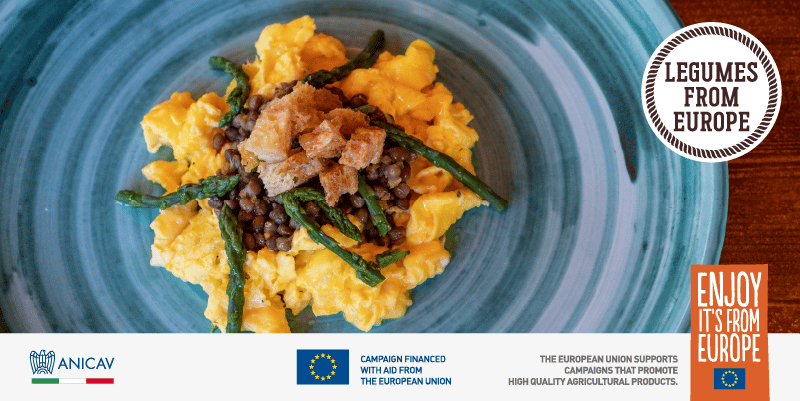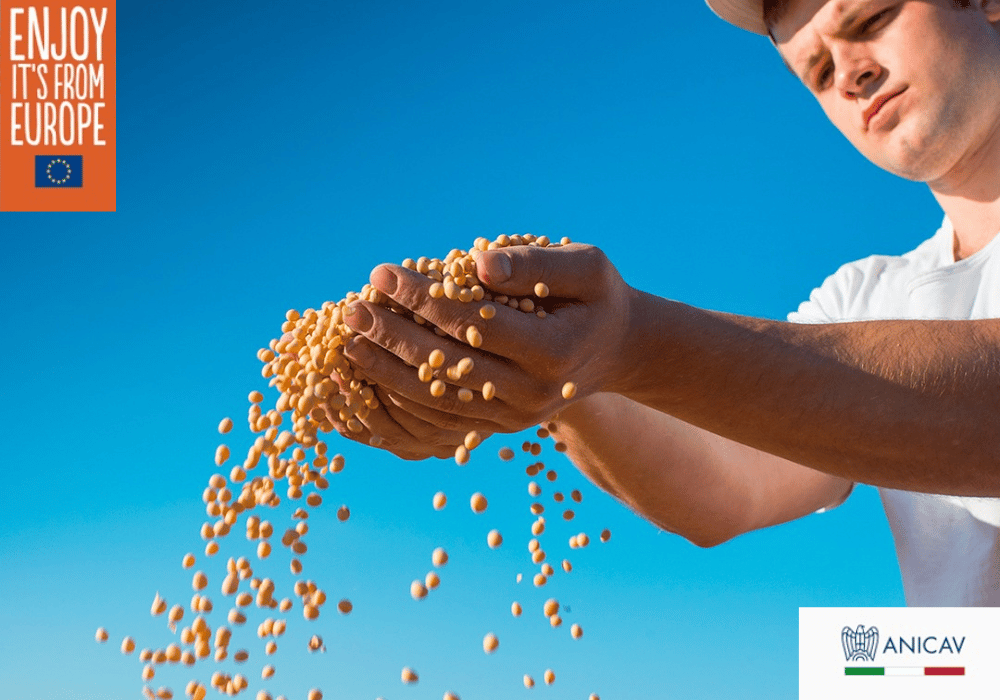Eating thoughtfully, both for yourself and for the planet has never been more important: individually, we all want and need to be healthy; together, we are guardians of the natural world around us.
And then, there is something we don’t always consider when we think about eating thoughtfully – that is deliciousness! It’s so important. Eating something delicious, like canned legumes from Europe, raises our feel-good hormones and so, our spirits, enticing us into eating these health-giving foods.
Canned legumes from Europe are right there on your shelf: ready to become part of your plant-based, flexitarian, or omnivore diet of thoughtful eating. And they are so delicious: tender, dense and bursting with goodness.
Scientific research has shown bean-and-legume eating brings benefits for all age groups: heart healthy and excellent for diabetics as well as a basis for plant-forward and vegetarian diets. They pack a lot of flavour and fibre into a modest calorie count, significantly lower than animal products, and are naturally low in sodium.
Beans (and legumes) are unique: a vegetable that is also a complex carbohydrate with the high protein count of about 20% by weight. Whichever bean or legume you choose, it is rich in soluble fibre, folate, protein, iron, vitamin B1, vitamin K, and minerals such as magnesium, phosphorus, potassium, and copper.
Canned legumes from Europe contribute to sustainability: legumes have a relatively low carbon footprint and do not need nitrogen fertilisation. In fact, growing legumes can even add nitrogen to the soil, via the plant’s shoots and roots. The organic matter that they produce feeds the microorganisms in the earth. So farming legumes is beneficial for biodiversity, working together with many other plants to enrich and benefit the soil.
But how do they taste? Canned Legumes from Europe are delicious! Tender, earthy, just as nature intended. And they are so versatile: chickpeas in hummus, for example. Borlotti bean in chili. Cannellini beans in minestrone. Chickpeas or lentils in pilaf or pasta. Eating healthily has never been more delicious!
And they are so easy to prepare. too. Your go-to high protein kitchen treasure, ready when you are. With canned legumes from Europe, you don’t need to devote hours to soaking and cooking. You just need to open the can…
Try this super-simple and uniquely tasty European salad recipe featuring lentils.
Lentil salad with scrambled eggs and asparagus

Prep time: 15 minutes.
Serves: 4.
Ingredients:
1 x red onion (finely chopped).
500g canned lentils (drained, reserve liquid for another use if you like, such as soup).
12 x asparagus spears.
4 x eggs (lightly beaten with a fork or whisk)
a tablespoon or two of milk
a handful of crisp croutons, as desired
salt and pepper.
a drizzle of extra virgin olive oil.
marjoram or thyme—either fresh or dried.
Method:
- Combine the onion with the lentils. Season with a dash of oil and marjoram along with salt and pepper to taste. Arrange the lentils in a domed shape, on four plates, then set aside.
- Slice the asparagus into halves lengthwise if required. Blanch in boiled salted water until just cooked through. Remove, drain, immersing in cold water to cool, then set aside.
- Mix the eggs with the milk, then lightly scramble in a small amount of olive oil, in a frying pan over low to medium heat. Cook only until they are creamy and just beginning to form curds, then remove from heat and season. Take care not to overcook them.
- Spoon the scrambled eggs onto the plates surrounding the lentils and garnish each plate with 3 stalks of the cooked asparagus.
Buon appetito! Enjoy – it’s from Europe!

